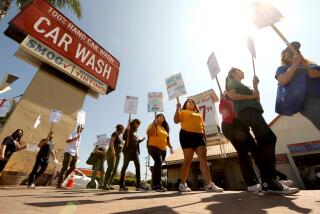A case for pension reform
A controversial new report estimates that government workers’ wages in California are, on average, about the same as in the private sector, but the retirement benefits for career employees are considerably greater. As the report notes, there are abundant nuances and exceptions; for example, the benefits offered teachers are much less generous than those for other state workers. And as critics observed, the report was paid for by a group dedicated to reining in public employee retirement benefits. Nevertheless, its research strengthens the argument in favor of at least some modest reforms.
Retirement benefit costs are being driven up by a number of forces, including higher wages, more generous pension formulas, rising healthcare expenses, increased longevity and the severe investment losses incurred when the markets collapsed in 2007. Although the problem is less acute for the state than for many local governments, actuaries at the California Public Employees’ Retirement System estimate that the state’s costs will grow for about a decade before leveling off and eventually declining. Meanwhile, two other state retirement funds — for teachers and the university system — are threatened by more severe shortfalls.
The report commissioned by the California Foundation for Fiscal Responsibility tried to gauge how reasonable public employee retirement benefits are by comparing them with what private industry provides for comparable workers. In general, the report found, total compensation for career public workers is better than for their counterparts in private industry, with larger retirement pay and healthcare benefits and roughly the same average pay.
The conclusion comes with abundant caveats. For example, the report found that public employees’ retirement benefits aren’t nearly as large if they don’t spend a full career in government. Private employee pay varies more widely, and large employers tend to pay higher wages than the government. Local government compensation tends to be higher than the state’s. And many public workers have no real equivalents in private industry, so any comparison is a bit of a stretch.
The report did not try to estimate how much of a financial burden pensions would become for state government. That’s a critical question; without a reliable assessment, it’s hard for lawmakers to rebut the claim from public employee unions that pension costs won’t grow significantly.
Nevertheless, the rough equivalence the report found between public and private wages challenges the often-repeated claim that government must provide generous retirement benefits to recruit and retain workers. That lends support to the proposals in Sacramento to curb practices that reward employees retroactively or inflate pensions. Although those changes wouldn’t make much of a dent in pension costs, they would at least counter the perception that some workers are improperly enriched at taxpayer expense. That’s an important step, albeit perhaps just the first one, in pension reform.
More to Read
A cure for the common opinion
Get thought-provoking perspectives with our weekly newsletter.
You may occasionally receive promotional content from the Los Angeles Times.










